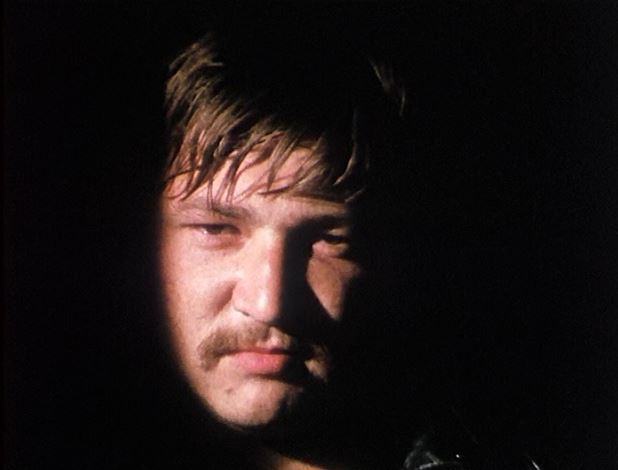Viewing the opening shot of The Niklashausen Journey, those with the relevant cinematic experience will instantly recognise the back of the head of Rainer Werner Fassbinder – almost entirely known by the leather jacket at this stage. Although the scene resembles something from an awful drama class, what is happening is vital to the era in which the film was shot; discussion of revolution. Fassbinder didn’t exactly set about producing timeless classics of cinema, but his pictures have more in common with the news. It means that in many cases, particularly if he’s dealing with politics or culture, there’s quite a few things you need to know if you are to enjoy them.
Fassbinder plays a character called The Black Monk, in The Niklashauser Journey, but as seen in the first few minutes of the film, he’s also playing himself as the director. It’s true that a lot of the youth of Europe at the time of release felt an urgent need for these answers, and to have them addressed so directly and clearly in cinema must have been thrilling. Fassbinder is in his most traditional gear – the leather jacket and the tight blue jeans – complete with an amazing muddy patch on the right buttock. Smoking yes, and dark glasses, yes. And spouting ideology while at the same time undermining it, a great effect he was able to pull off again and again; the sort of thing that merely baffles lesser directors.
As for his politics, these are hard to pin down; which is something to be respected. Is it right as he says that only those with wealth can life agreeably; and that if anyone wants something, they should have that thing? What Fassbinder presents are facts, and facts are contradictory, as we know. He gives a pretty elementary economics lesson about the hunters of deer and bear trying to work out a system of barter; and it is clearly ridiculous, and manages to present a few home truths. The conclusion is that when personal needs are met by barter, they can only be partially satisfied; which is fair point in any era.
As the camera shots are all pretty identical in this film – the slow static zoom or the travelling dolly – it helps if you do look powerful; and Fassbinder is always incredible; the brilliant slouch; never without a cigarette; the hand in the pocket; the shirt wide open (normally). He walks along the road, another very common shot in this movie, basically as himself, moving the plot an inch or two in the direction of home.
Ultimately he says too little; that’s probably just a tease. But I would like to have heard him delivering some of the polemic which seems to tire out the other actors, simply because it would never tire him out. Why he keeps returning to the walking along the road tracking shot again and again; it is simply what he is trying to build as artistic purpose, the journey; it is the film’s backbone and so he must as often as possible have the characters talking and planning while on the move.
Die Niklashauser Fart (1970) Gallery
{AG rootFolder="/images/" thumbWidth="200" thumbHeight="120" thumbAutoSize="none" arrange="name" backgroundColor="ffffff" foregroundColor="808080" highliteColor="fea804" frame_width="500" frame_height="300" newImageTag="0" newImageTag_days="7" paginUse="0" paginImagesPerGallery="25" albumUse="1" showSignature="0" plainTextCaptions="0" ignoreError="1" ignoreAllError="0" template="classic" popupEngine="slimbox"}film_stills/niklashauser{/AG}



